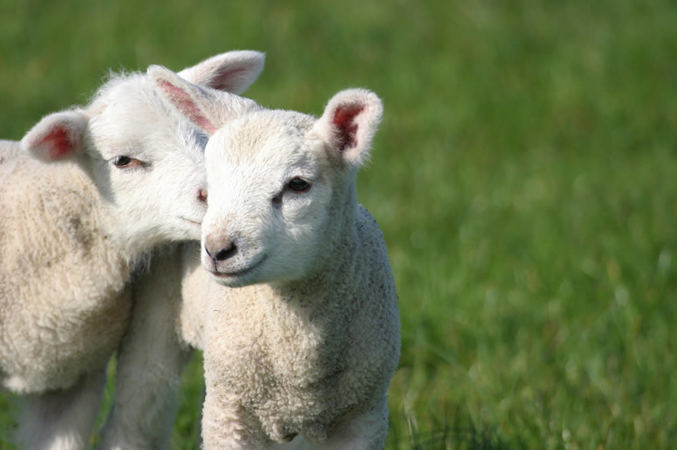Rabbits have been domesticated fairly recently, compared to other domesticated animals. The ancestor of both farmed and pet rabbits is the wild European rabbit we still see today. Wild rabbits live in varying habitats including forests, woodland, meadows, Savannah deserts and wetland and are found in several parts of the world. Domestic rabbits behave very similarly to wild rabbits.

The natural life of rabbits
Rabbits are prey animals and to avoid predators they mainly feed at dusk and dawn. They are herbivores and eat a variety of plants including grass. While above ground, rabbits will frequently check for predators by sitting up on their back legs or against objects with their ears pricked to listen for potential danger; this is part of their natural behaviour.
They have an excellent sense of smell and peripheral vision and are very good diggers. When chased by a predator, their long, powerful hind legs allow them to run very fast. Some can reach speeds of 35 miles/hour. They can also jump over a metre high.
Rabbits are highly social animals and live in family groups of 2-9 females, 1-3 males and their offspring. The family will share their home range and live in a network of burrows, called a ‘warren’, which they will defend against predators and other rabbits. A warren contains different areas which are used for specific activities such as sleeping and nesting. Mutual grooming is important to reinforce social bonds.
Female rabbits (‘does’) tend to reproduce when the climate is favourable. Before giving birth a doe will build a nest, lining it with her own fur, in an isolated part of the warren. After the kits (young rabbits) are born she leaves them alone for most of the time. She only enters the nest for a few minutes once a day to feed the kits, and seals up the nest entrance afterwards to keep them safe.
Rabbit farming today
Almost one billion rabbits are slaughtered annually for meat worldwide; over 50% of these are in China (FAOSTAT 2017). In the European Union approximately 180 million rabbits are slaughtered for meat every year: 120 million from commercial farms and 60 million from backyard farms. The majority of these are produced in Spain, France and Italy. Around 94% of commercially farmed rabbits in the EU are caged (European Commission 2016).
Nearly all rabbits farmed for meat and fur are kept in small, barren cages where their natural behaviour is severely restricted. Rabbits in intensive farming systems experience very bad welfare.
Find out more about the welfare of farmed rabbits.


